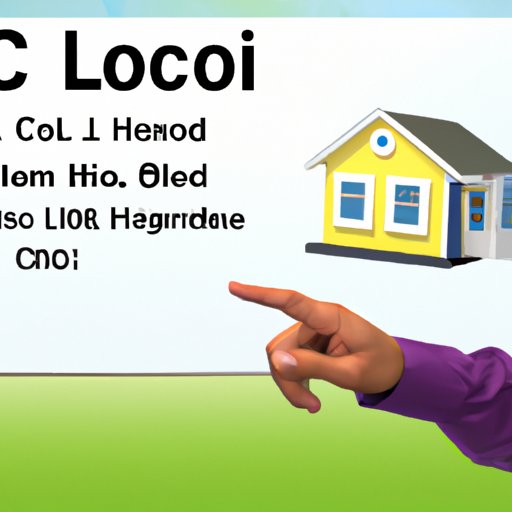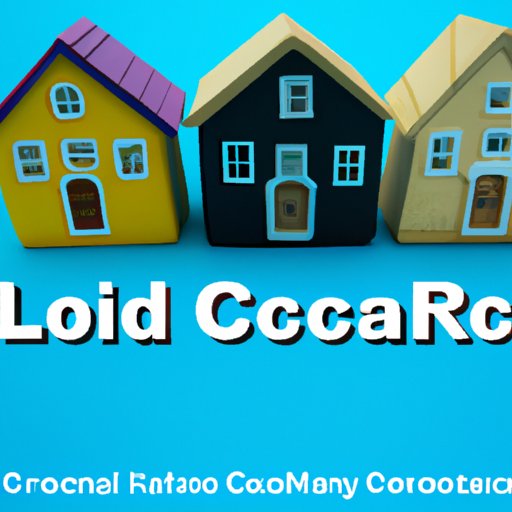Introduction
A Home Equity Line of Credit (HELOC) is a type of loan that allows homeowners to access the value of their home as collateral. It is similar to a credit card in that you can borrow up to a certain limit, but unlike a credit card, the interest rate on a HELOC loan may be lower, and the repayment terms are typically more flexible. Understanding how a HELOC loan works is important, as it can help you make informed decisions about your finances and determine if a HELOC loan is the right option for you.

Explaining the Basics of a HELOC Loan
A Home Equity Line of Credit (HELOC) is a type of loan that is secured by the equity in a borrower’s home. With a HELOC, the borrower is able to access funds up to a predetermined limit, which is set by the lender. The borrower then has the ability to use these funds as they see fit, such as making home improvements or consolidating debt. The amount of the loan is based on the amount of equity in the home and the borrower’s creditworthiness.
One major difference between a HELOC loan and other types of loans is that the interest rates are usually lower. This is because the loan is secured by the equity in the home, meaning that the lender has some assurance that the loan will be repaid. Additionally, the repayment terms on a HELOC loan are typically more flexible than other types of loans, allowing borrowers to make payments over a longer period of time if necessary.

Outlining the Steps Involved in Obtaining a HELOC Loan
The first step in obtaining a HELOC loan is to determine whether or not you qualify. To do this, lenders will typically review your income, credit score, and property value. If you meet the qualifications, you can then apply for the loan. Generally, the application process involves providing documentation such as bank statements, proof of income, tax returns, and other financial documents.
Once your application is approved, the next step is to negotiate the terms of the loan. This includes deciding on the total amount of the loan, the interest rate, and the repayment period. It is important to understand the terms of the loan before signing any paperwork, so it is wise to consult with an experienced financial advisor before making a final decision.
Examining the Pros and Cons of a HELOC Loan
When considering a HELOC loan, it is important to consider both the advantages and disadvantages. On the plus side, a HELOC loan can provide access to funds quickly and easily, without having to take out a more traditional loan. Additionally, the interest rates are often lower than other types of loans, making them more affordable. Finally, the repayment terms are typically more flexible, allowing borrowers to pay off the loan over a longer period of time.
On the downside, a HELOC loan can be difficult to manage if you are not disciplined. Additionally, the loan is secured by the equity in your home, meaning that if you fail to make payments, the lender can foreclose on your home. Finally, if you decide to refinance your loan, you may have to pay closing costs, which can add up quickly.
Discussing How Interest Rates are Calculated on a HELOC Loan
Interest rates on a HELOC loan are determined by several factors, including the borrower’s creditworthiness, the amount of equity in the home, and the current market conditions. Generally, the interest rate on a HELOC loan is variable, meaning it can change over time. However, some lenders offer fixed-rate HELOC loans, which have a set interest rate throughout the duration of the loan.

Reviewing the Requirements for Qualifying for a HELOC Loan
In order to qualify for a HELOC loan, there are certain requirements that must be met. Generally, borrowers must have a minimum income, a good credit score, and sufficient equity in their home. Additionally, lenders may require additional documents, such as bank statements or proof of income.
Analyzing the Impact of a HELOC Loan on Credit Scores
A HELOC loan can have both positive and negative effects on a borrower’s credit score. On the one hand, if the borrower makes timely payments, it can help improve their credit score. On the other hand, if the borrower fails to make payments, it can have a negative impact on their credit score. Therefore, it is important to understand the risks associated with taking out a HELOC loan and to make sure that you are able to make all payments on time.
Conclusion
A Home Equity Line of Credit (HELOC) is a type of loan that can be used for various purposes. In order to understand how a HELOC loan works, it is important to consider the basics, such as what is required to qualify, how to apply, and the pros and cons associated with it. Additionally, it is important to understand how interest rates are calculated and the potential impact a HELOC loan can have on your credit score. By understanding how a HELOC loan works, you can make an informed decision about whether or not it is the right option for you.
(Note: Is this article not meeting your expectations? Do you have knowledge or insights to share? Unlock new opportunities and expand your reach by joining our authors team. Click Registration to join us and share your expertise with our readers.)
